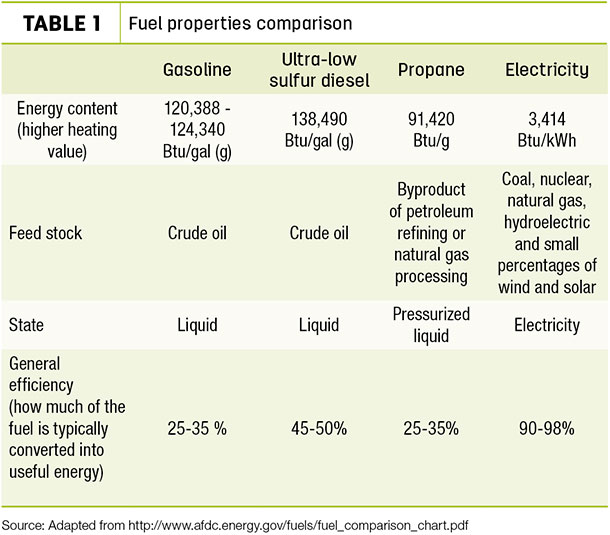Uber, Lyft, Google’s self-driving car, smartphones – each of these is the outgrowth of a rapidly evolving and disruptive trend often referred to by its acronym, “CASE.” No, we aren’t referring to the trusted brand of tractor or machine, but rather the four key dynamic forces coming together to reshape our world: connected, autonomous, shared, electric.
These forces are already at work driving change in agricultural technology.
Today’s tractors are connected to the farmer’s tablet, each other, the dealer, the cloud and the field with real-time data tracking and GPS guidance with feedback on everything from ground conditions to direction of travel.
CASE’s autonomous tractor debuted in 2016, and a recent headline about John Deere’s AutoTrac guidance system, “Google didn’t lead the self-driving revolution. John Deere did,” says it all.
As for sharing, the conga lines of combine harvesters moving from one farm to the next is a form of sharing – not sharing the ride but sharing the machines to do the work.
That leaves “electric.” Will we see fully electric tractors on the farm? The question is probably more “when” than “if.”
Electrification for farm machines has been happening for over 15 years in various forms. The strategy has always been to make the machine more efficient and productive, and using electric motors instead of engine-driven belts or hydraulic pumps reduces engine load, enables fuel savings and often enhances performance.
Electrification of implements is of primary interest, reducing hydraulic and mechanical PTO connections to wires only. The infinitely variable settings of electric motors ensure a smoother operation than mechanical linkages. But the “juice” has to come from somewhere – stored in batteries or generated onboard.
Generating electricity onboard is easy utilizing the diesel engine functioning more like a generator, creating electrical power, like the set-up in locomotive engines where electric motors turn the drive wheels.
Diesel engines are most efficient in a steady-state “sweet spot” power band of operation of adequate power but maximum fuel efficiency. There are good examples of this approach right now, such as in the AGCO Fendt X Concept tractor.
If the engine is used to generate electricity, a corollary benefit is the opportunity to downsize the engine to smaller displacement, saving fuel and space.
And then there is the prospect of full tractor electrification and no internal combustion engine at all. Limitations of getting to fully electric farm tractors and machines are much the same as those faced in the automotive world today – costs, battery technology, vehicle performance and need.
In February 2017, John Deere unveiled a concept fully electric tractor known as SESAM (sustainable energy supply for agricultural machinery).
Instead of an internal combustion engine, this standard 6000 Series row-crop tractor has battery packs under the hood that deliver 130 kilowatts of continuous power fed through two electric motors for drivetrain and PTO and auxiliary power needs, with highest peak power at about 400 hp.
According to Deere, one battery charge lasts for up to four operating hours, and it takes about three hours to fully charge the battery.
Comparing fuels such as electric and diesel is by no means a simple exercise (Table 1). Which fuel has the most energy potential: a gallon of diesel fuel or a block of lithium ion batteries? It depends.

Electricity is a secondary energy source and has to come from somewhere, so the source of the electricity is a key factor in evaluating cost. The batteries that store it are an essential consideration as well – with most being lithium-ion rather than traditional lead acid.
How the energy is used is important, which means looking at a given powertrain and how efficient it is in converting the stored energy (electricity) or potential energy (diesel fuel) into useful mechanical energy.
You can take it a notch further and look at wells-to-wheels analysis, which traces back to the source of the energy, whether it be petroleum diesel fuel or electricity generated from coal-fired power plants or solar and wind-renewable.
If you were able to generate 100 percent of electricity from renewable (solar or wind) sources on the farm and store it in batteries for use in a tractor, that would virtually be an unbeatable setup.
There is no denying electric motors are more efficient than internal combustion engines, with efficiency in the 90 percent range. There are no mechanical losses due to friction or pumping losses from the combustion process since an electric motor has no moving parts or combustion.
There are minor losses of efficiency from the conversion from direct current to alternating current, releasing and storing electricity in a battery, transmitting the electricity and generating it from a power plant. Electricity rates are highly variable across the country and depend on the source of power, the load and demand factors in the market, and other economic conditions.
The greatest technical issues for electricity as prime power for farm tractors and machines comes down to storage of energy in batteries and the trade-offs of the batteries’ weight versus range of operation, all-weather performance, recharging time and life-cycle issues, since most farm equipment is in service for many years.
What can we learn from electrification trends in the auto world? Electric cars are targeted in densely populated urban areas with air pollution problems, where driving range is limited and generous federal and state incentives to acquire vehicles and install upgraded charging infrastructure have been available.
In 2016, auto sales hit 17.465 million units in the U.S. Of those, there were about 84,000 battery electric and about 72,000 plug-in hybrid vehicles sold – combined representing just 0.8 percent of all vehicles sold last year.
Clearly, the same motivators for electric cars are not the same as those encountered on the farm. Before we see electric engines replacing diesel as the prime power in farming, we’d have to see a clear cost advantage and a compelling economic case for the benefits of investing in the technology.
Major breakthroughs in battery technology would accelerate these kinds of considerations because this is arguably the most limiting factor at the moment. But diesel power is not standing still either, with improving efficiency and the connection to using renewable biodiesel fuels.
Rest assured, however, that tractor and machine manufacturers are always thinking one and two steps ahead.
The incremental gains in efficiency from some level of electrification of tractor and implements, further automation and connectivity ensure that farmers will have access to the most efficient and productive machines available, whatever they are powered by and whomever is operating them. ![]()

-
Allen Schaeffer
- Diesel Technology Forum
- Email Allen Schaeffer






